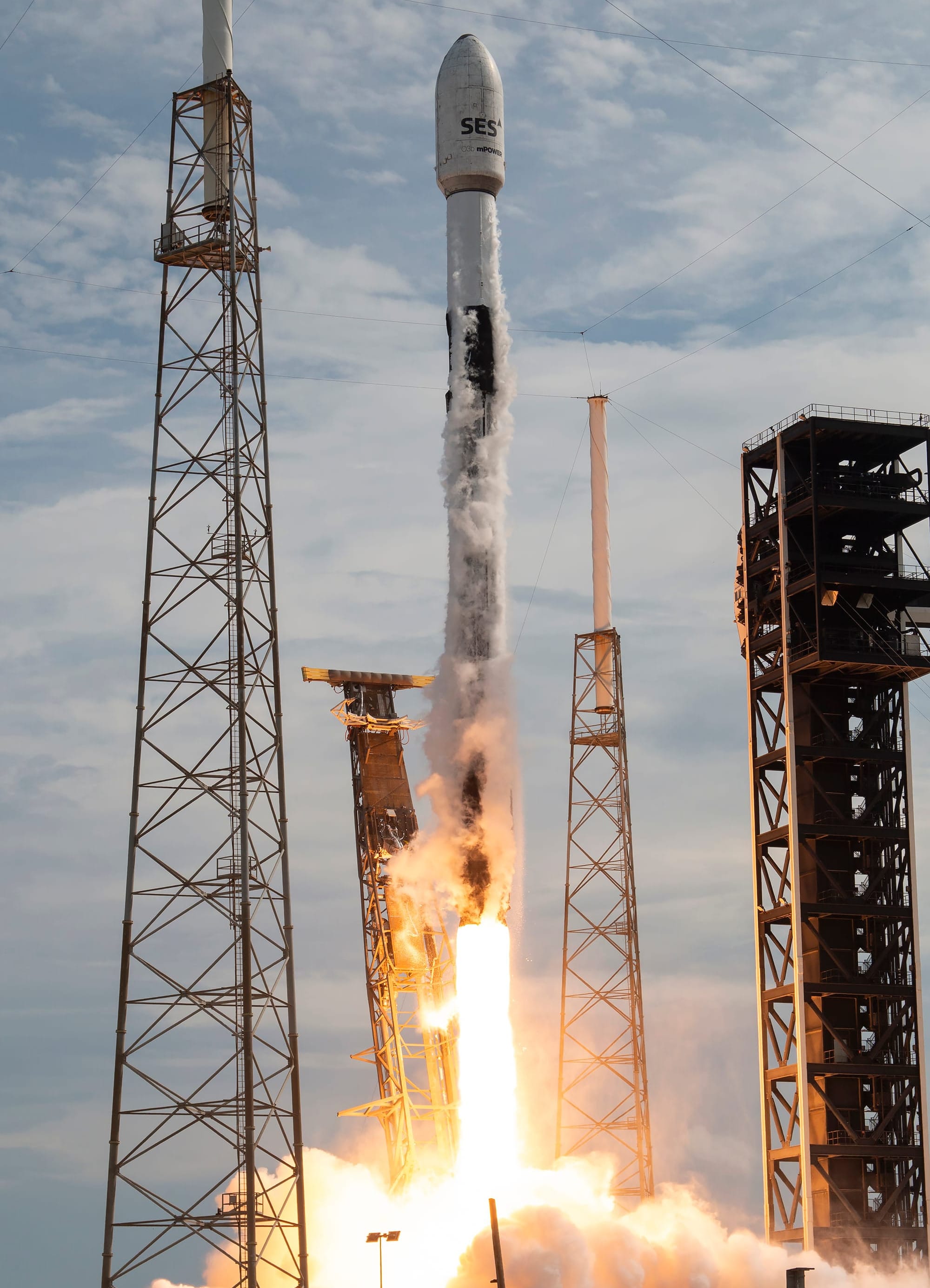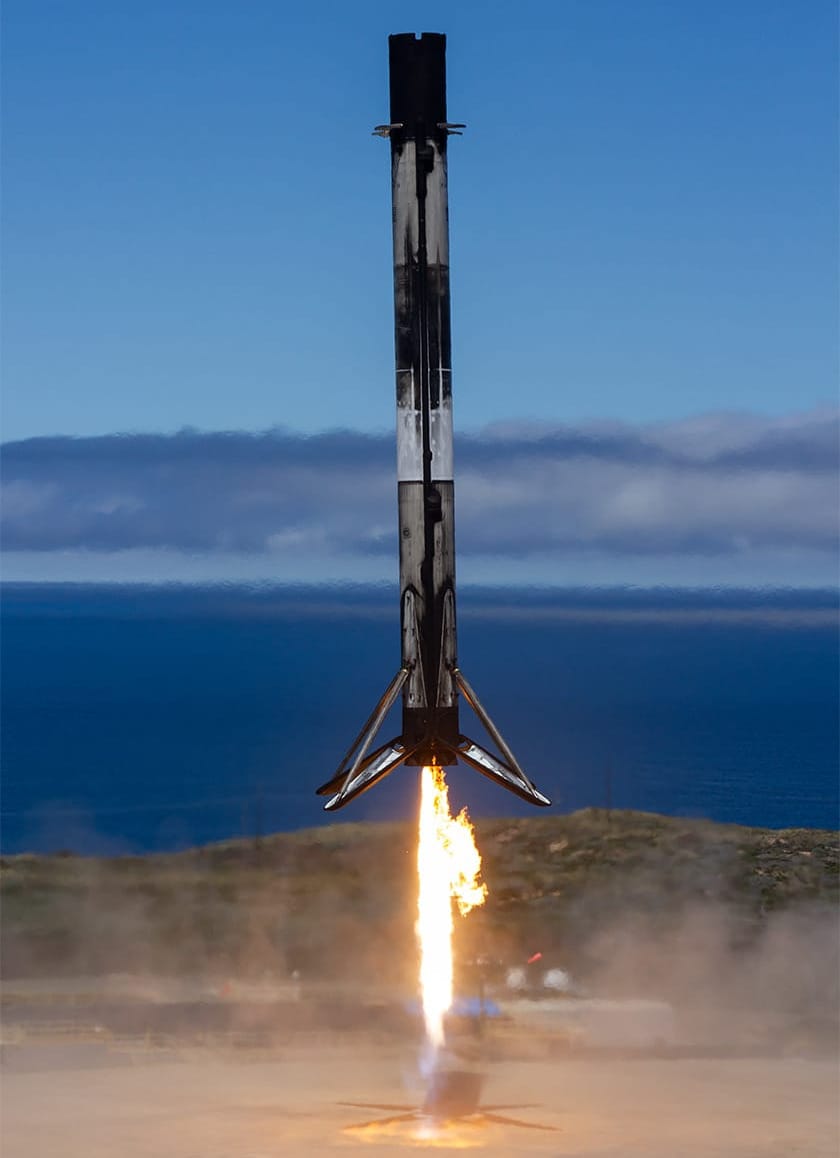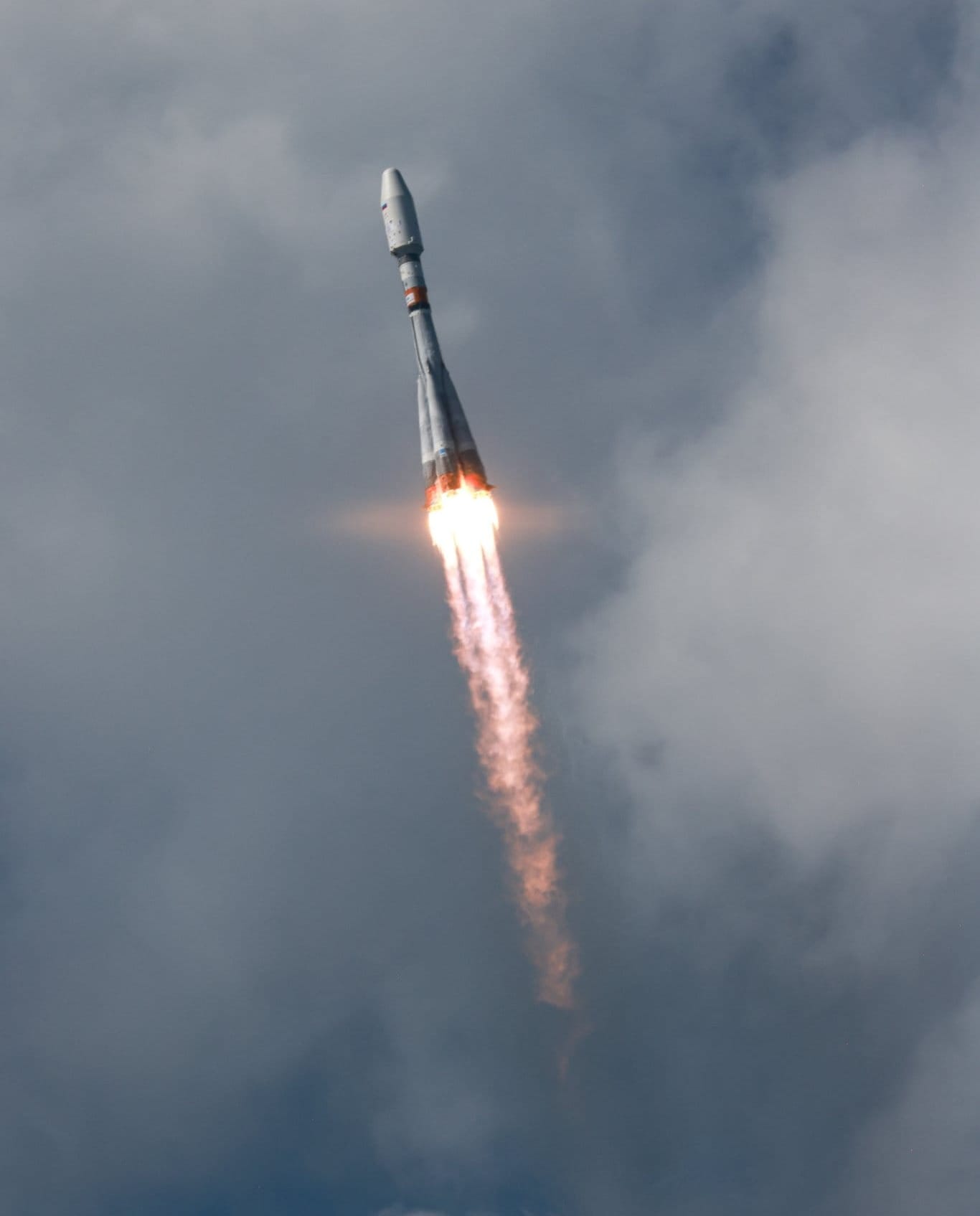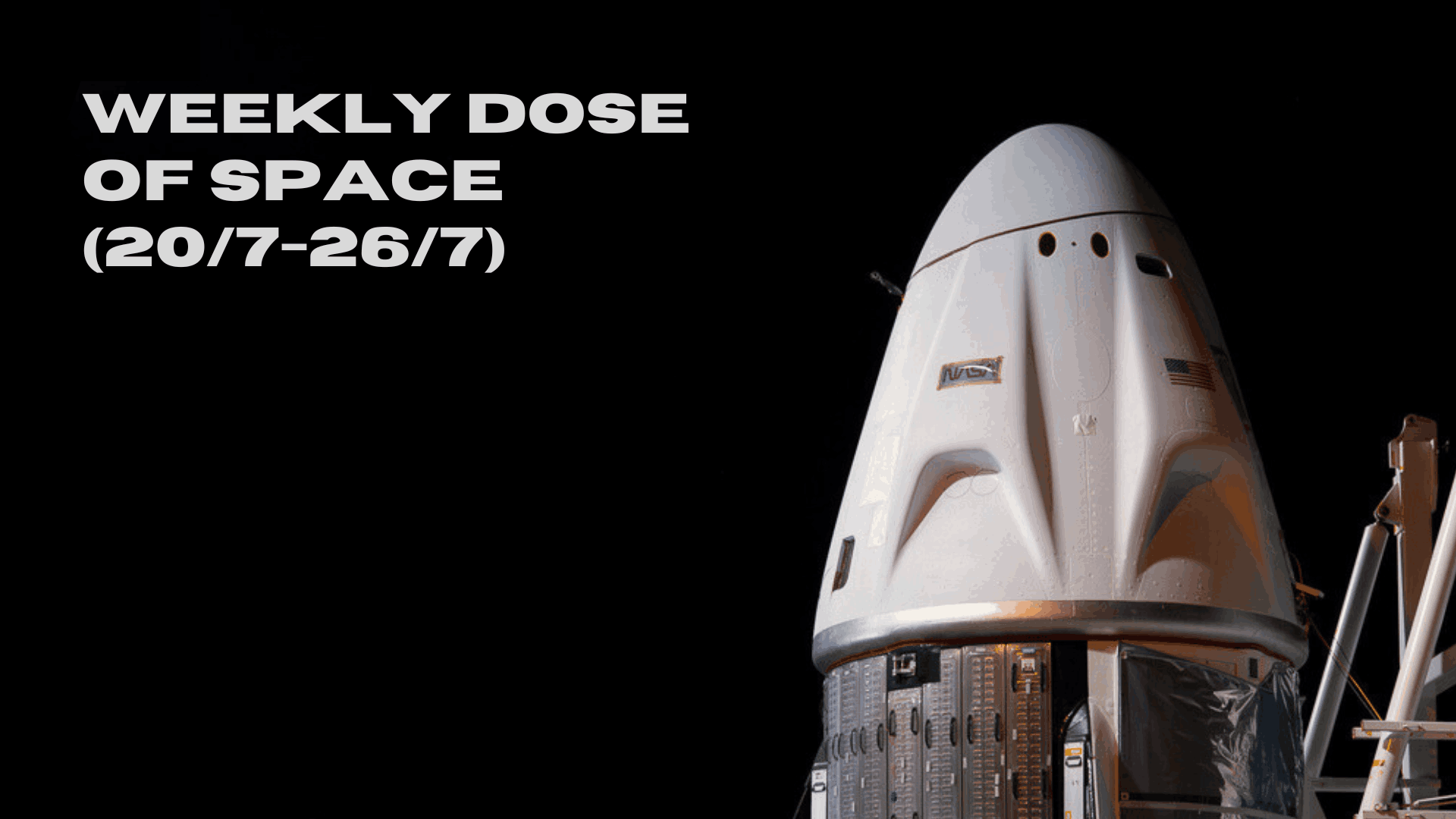Table of Contents
Welcome back to Weekly Dose of Space! This week, once again, had five launches worldwide, with the majority performed by Falcon 9. News during the week saw the Artemis Accords gaining another member, some details on the first Blue Ring mission, and the launch pad for Rocket Lab's Neutron nearing completion. As always, we'll also look ahead to what the worldwide launch schedule might look like next week.
Launches This Week
July 22nd - Falcon 9 with two O3b mPOWER satellites
SpaceX launched two O3b mPOWER communications satellites to a medium Earth orbit from Space Launch Complex 40, in Florida, atop of a Falcon 9. Supporting this mission was booster B1090, for its sixth flight and landing downrange on the drone ship 'Just Read The Instructions'.

July 23rd - Falcon 9 for multiple missions
A Falcon 9 is to lifted off from Space Launch Complex 4E, in California, carrying NASA's TRACERS (Tandem Reconnection and Cusp Electrodynamics Reconnaissance Satellites), PExT (Polylingual Experimental Terminal), and Athena EPIC (Economical Payload Integration Cost) missions to sun-synchronous orbit alongside Dartmouth College's REAL (Realistic Electron Atmospheric Loss) mission. Booster B1081 supported this mission for its sixteenth flight, landing back at Landing Zone 4 inside the Vandenberg Space Force Base.

July 25th - Soyuz 2.1b with two Ionosfera-M satellites
A Soyuz 2.1b launched two Ionosfera-M ionospheric and magnetospheric research satellites to sun-synchronous orbit from the Vostochny Cosmodrome. Eighteen other small spacecraft were also onboard, including the Iranian Nahid-2 telecommunications satellite.

July 26th - Vega-C with CO3D & MicroCarb
Vega-C launched from the Guiana Space Centre carrying five satellites to sun-synchronous orbit for CO3D and MicroCarb missions. Four CO3D spacecraft for Earth observations were onboard, while the MicroCarb satellite is planned to map sources and sinks of carbon dioxide.
🎬 Want more of the lift off? Here is the replay!
— Arianespace (@Arianespace) July 26, 2025
Vega C flight #VV27 has lifted off from Europe’s Spaceport, carrying 4 CO3D satellites and MicroCarb to orbit.
Enjoy the launch moment again👇 (1/2) pic.twitter.com/RFBybDTr8X
Vega-C lifting off from the Guiana Space Center, via Arianespace on Twitter.
July 26th - Falcon 9 with Starlink Group 10-26
Twenty-eight Starlink satellites were launched to low Earth orbit from Space Launch Complex 40 via a Falcon 9. Booster B1078 supported this mission for its twenty-second flight, landing on the drone ship 'A Shortfall Of Gravitas' downrange.
In Other Space News
Senegal signs the Artemis Accords
Senegal has signed the U.S.-led non-binding Artemis Accords on July 24th, becoming the fifty-sixth country to do so. Director General of the Senegalese space agency Maram Kairé signed the Artemis Accords on behalf of Senegal, hosted by NASA chief of staff Brian Hughes. Commenting after the signing, Kairé shared:
"Senegal’s adherence to the Artemis Accords reflects our commitment to a multilateral, responsible, and transparent approach to space," – "This signature marks a meaningful step in our space diplomacy and in our ambition to contribute to the peaceful exploration of outer space."
Although not present at the signing, Acting NASA Administrator Sean Duffy added the following via the NASA press release:
"Following a meeting between Senegal President Faye and President Trump, today, NASA built upon the strong relations between our two nations as the Senegalese Agency for Space Studies signed the Artemis Accords," – "With Senegal as the 56th signatory, I am proud to further President Trump’s strong legacy of global cooperation in space."
With the signing of the accords, Senegal joins Angola, Argentina, Armenia, Australia, Austria, Bahrain, Bangladesh, Belgium, Brazil, Bulgaria, Canada, Chile, Colombia, the Republic of Cyprus, Czech Republic, Denmark, the Dominican Republic, Ecuador, Estonia, Finland, France, Germany, Greece, Iceland, India, Israel, Italy, Japan, Liechtenstein, Lithuania, Luxembourg, Mexico, Netherlands, New Zealand, Nigeria, Norway, Panama, Peru, Poland, the Republic of Korea, Romania, Rwanda, Saudi Arabia, Singapore, Slovakia, Slovenia, Spain, Sweden, Switzerland, Thailand, Ukraine, the United Arab Emirates, the United Kingdom, and Uruguay as a signatory.
First Blue Ring To Demonstrate Space Awareness Sensor
Blue Origin announced on July 24th that the first mission of its Blue Ring spacecraft will support a next-generation space domain awareness sensor from Scout Space onboard. This mission is expected to begin in Spring 2026 via a launch into a geostationary transfer orbit followed by operations in geostationary orbit.
Scout Space's space domain awareness sensor, called Owl, is designed to enhance real-time tracking, characterization, and assessment of space objects via advanced optical sensing, onboard artificial intelligence-driven processing, and autonomous decision-making capabilities to deliver intelligence in space in support of U.S. government customers. Speaking on using the Owl sensor on Blue Ring, Paul Ebertz, Senior Vice President of Blue Origin’s In-Space Systems business unit, stated:
"Integrating Scout’s Owl sensor on this first mission marks a significant step forward in advancing [space domain awareness] capabilities and underscores our commitment to supporting the nation’s mission requirements," – We’re thrilled to bring Blue Ring to market and support Scout with unmatched mission maneuverability, versatility, and capacity in [geostationary orbit] and beyond."
Philip Hover-Smoot, Chief Executive Officer of Scout Space, added:
"We’ve always believed that no single company can bring the best space superiority capabilities to the market alone," – "We’re thrilled to work with Blue Origin to bring Scout’s secure solutions onboard this historic first Blue Ring mission."
Work continues at Launch Complex 3
Since announcing its partially reusable Neutron rocket, fuelled by liquid methane and liquid oxygen, Rocket Lab has been busy building the vehicle's launch pad in Wallops, Virginia. Recently, the company has shared new images of the launch pad, taken from above, with work on the rocket's launch mount, propellant systems, and water deluge equipment appearing complete or near complete.
According to the company's Principal of Environmental Innovation and Sustainability, the launch pad should be ready for an official opening next month.
This follows a series of various updates on Neutron, including tests of the launch pad, as well as the vehicle's Archimedes engines, payload fairing systems, and guidance fins. The company also announced a sea-based landing platform, dubbed 'Return On Investment'.
Launch Complex 3 is almost complete and on track for its official opening next month 🏗️ Our team in Virginia is deep into launch pad activation, going system by system to prepare for test operations once flight hardware arrives ahead of Neutron’s first launch. pic.twitter.com/6aqwVkCKw7
— Rocket Lab (@RocketLab) July 24, 2025
Rocket Lab's Launch Complex 3 as seen from above, via Rocket Lab on Twitter.
What to Expect Next Week
July 27th - Falcon 9 with Starlink Group 17-2
SpaceX intends to launch a batch of Starlink satellites to low Earth orbit via a Falcon 9 flying from Space Launch Complex 4E.
July 27th - Long March 6A with GuoWang satellites
A Long March 6A will liftoff from the Taiyuan Satellite Launch Center carrying a group of GuoWang satellites into polar orbit.
July 28th - Eris for its debut flight
Gilmour Space is planning to perform the debut flight of its Eris rocket from the Bowen Orbital Spaceport, in Australia.
July 29th - Hyperbola-1 with a to-be-annouced payload
iSpace is preparing to perform its second return-to-flight mission with its small, solid-fuelled Hyperbola-1 rocket for its eighth overall mission.
July 30th - Falcon 9 with Starlink Group 10-29
Another Falcon 9 is planning to launch a batch of Starlink satellites to low Earth orbit from Space Launch Complex 40.
July 30th - Long March 8A with a to-be-annouced payload
A Long March 8A is preparing to liftoff from the Wenchang Commercial Space Launch Site, possibly with either a batch of GuoWang or Qianfan internet mega-constellation satellites.
July 30th - GSLV MK II with NISAR
The Indian Space Research Organisation is expecting to launch its joint spacecraft with NASA (NASA-ISRO Synthetic Aperture Radar, or NISAR) to sun-synchronous orbit atop of a GSLV Mk II rocket from the Satish Dhawan Space Center.
July 30th - Falcon 9 with Starlink Group 13-4
Yet more Starlink satellites are expected to be launched from Space Launch Complex 4E atop of a Falcon flying to low Earth orbit.
July 31st - Electron for a HASTE mission
Rocket Lab is believed to be preparing for an Electron flight in its HASTE (Hypersonic Accelerator Suborbital Test Electron) configuration, flying out of Wallops, Virginia, on a suborbital trajectory.
July 31st - Falcon 9 for Crew-11
NASA's Crew-11 mission, with astronauts Zena Cardman and Mike Fincke, as well as JAXA's Kimiya Yui and Roscosmos' Oleg Platanov, to the International Space Station is expected to launch atop of a Falcon 9 from Launch Complex 39A.







